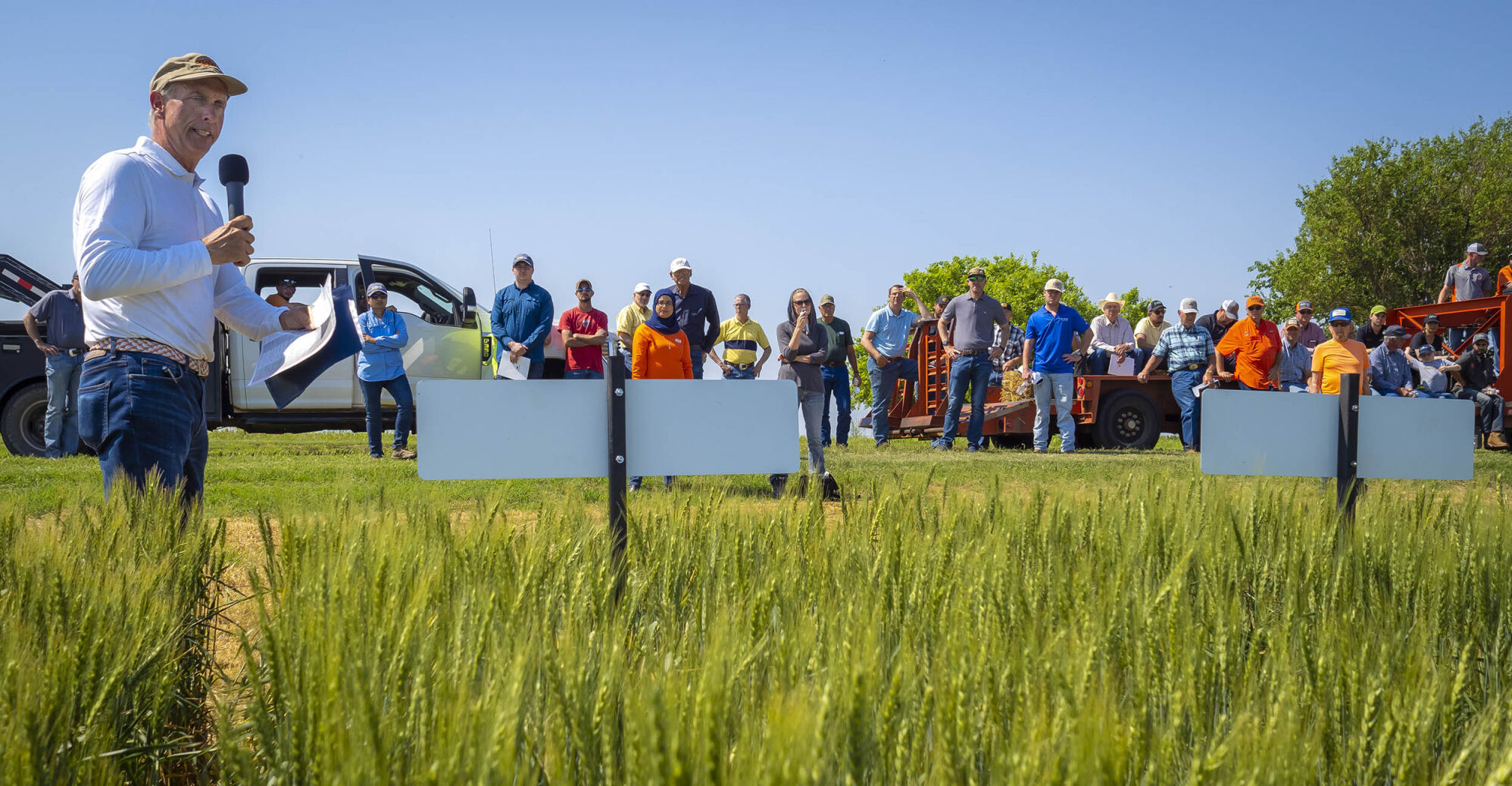Wheat harvest is underway in Oklahoma, and as an appropriate prelude, members of the OSU Wheat Improvement Team are working on stronger, higher quality wheat varieties.
Oklahoma State University wheat genetics chair Brett Carver shared with wheat producers at the recent Lahoma Field Day that his team of OSU wheat researchers have been breeding wheat varieties with exceptionally high gluten quality, excellent yield and reliable disease resistance.
“With wheat, we can look at a lot of different quality factors, but the one that probably stands out the most is the gluten quality,” Carver said. “The better the gluten quality, the better we can make a loaf of bread. That’s not to discount yield. We’re always going to be thinking about yield, but let’s bring quality into the conversation.”
Higher gluten quality could mean more profitability for producers by increasing a wheat crop’s value, and when that trait is combined with high disease-resistance, producers could also see an increase in yields.
“These new lines were bred for the purpose of maximizing the strength of the gluten. To do this, we had to use genetics we had never used before with the hard red winter wheat class,” Carver said of OSU’s new line of wheat varieties with a Gallagher lineage.
A variety currently called “OK15MASBx7 ARS 8-29” was Carver’s primary focus for the day’s presentation. It was created by cross breeding Gallagher and a Colorado State University variety called Snowmass.
OSU agronomists have created this new caliber of Gallagher to use a specific naturally occurring gluten protein that does not exist in other OSU wheat varieties.
“When you put that particular gluten protein with the Gallagher background, now we have a super strong wheat,” Carver said. “It was not easy to do. It took 10 years to get here. It was not an overnight success, but I think we’ve got it in this 8-29 line. And the yield of this would be a little bit higher than Gallagher.”
The 8-29 variety would serve as an ingredient in bread rather than as a stand-alone crop because its gluten is incredibly strong.
The 8-29 variety has a strength equivalent to or better than hard red spring varieties from the northern U.S. and Canada, and it averages 2 bushels more per acre than Gallagher. It is also more resistant to stripe rust than Gallagher.
“Adoption of the 8-29 variety would change what goes on the ingredient label for bread,” Carver said. “Vital wheat gluten is being added to bread to bolster the strength to allow for the modern-day, high-speed processing that occurs. We think we can do that naturally in our wheat varieties themselves.”
Carver said there is nothing wrong with additives in wheat bread, but are they really needed? Getting away from vital wheat gluten to rely on just the wheat itself would be a big boost to the wheat industry because additives are costly.
“We are evaluating with the industry just how much vital wheat gluten can be replaced in bread with this wheat,” Carver said.
Carver said the 8-29 variety could also replace dough conditioners that are added to breads.
“There’s value in that to the baking industry and to the farmer,” Carver said. “Now, the farmer can produce a lot of bushels of wheat, and there is quality in those bushels that cannot be found in any other bushel of winter wheat.”
Carver said OSU researchers have started experimenting with four other derivatives of 8-29 that also have a Gallagher background in hopes of creating an even better yield while maintaining the high quality.
“It just so happened that working with Gallagher not only gave us the agronomic strength, but it gave us the baking strength from certain gluten proteins we were targeting and introducing into that Gallagher background,” Carver said.
Carver said he expects OSU will release the new Gallagher wheat varieties over the next two years.
“This is kind of a monumental moment for us. I had no idea in 2012 when we started this cross-breeding program that this is where we’d end up—in a uniquely functional class of wheat,” Carver said. “I want to make sure that producers have something they can grow and capture value from, not only just in the baking industry but at the producer level as well. We’re trying to figure it out as quickly as we can.”




